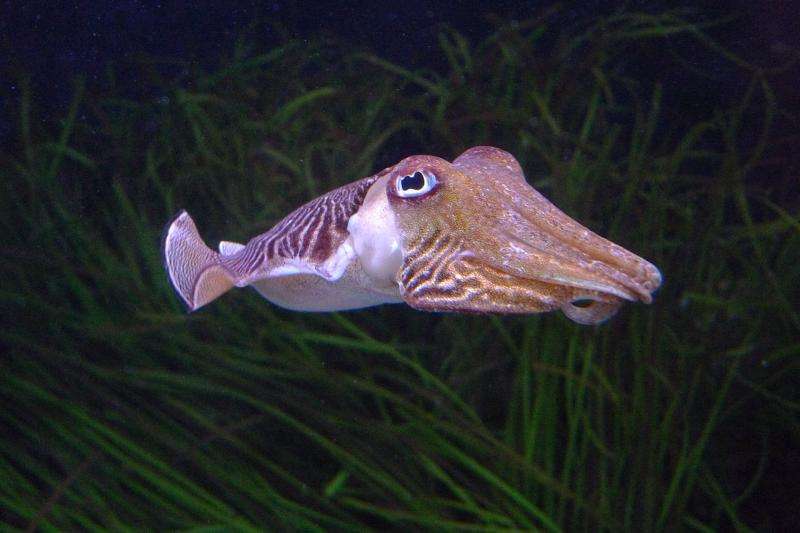March 13, 2019 report
Researchers find fighting and mating success in giant Australian cuttlefish influenced by sidedness

A team of researchers from the University of Rennes in France, Southern Cross University in Australia and the Marine Biological Laboratory in the U.S., has found that both fighting and mating success with giant Australian cuttlefish are influenced by behavioral lateralization. In their paper published in Proceedings of the Royal Society B, the group describe their study of the largest species of cuttlefish and what they found.
Behavioral lateralization is where an animal favors some parts of its body over another, generally in a left versus right arrangement. Most people, for example, are right handed. Despite a lot of research, scientists still do not know why there are exceptions, such as why ten percent of people are left-handed. Also unclear is why it appears that such subgroups tend to have an advantage when it comes to certain behaviors such as fighting. In humans, left-handers tend to do exceptionally well in sports and in the arts. Also unclear is how it persists—prior research has shown that dominant right behavioral lateralization in humans has been around for at least 5000 years, as has the 90/10 ratio.
In this new effort, the researchers sought to learn more about behavioral lateralization by studying the giant Australian cuttlefish—prior research has shown most are left-eye dominant.
In watching the behavior of the cuttlefish, the researchers found that those members of a group who were left-eye dominant tended to instigate fights with other males more often. But interestingly, it was the right-eyed males who tended to win those fights. The researchers also found that when males approached females from the right, they were far more likely to find her receptive to mating.
The researchers propose that the reason right-eyed cuttlefish are more likely to come out ahead when fighting is because they fight in ways the lefties are not used to seeing. They move differently because they see things differently. They further suggest the same could be true for humans—left-handed tennis players, for example, send the ball back to their opponents at different angles. The researchers were not able to explain why females preferred to be approached from one side or the other.
More information: Alexandra K. Schnell et al. Fighting and mating success in giant Australian cuttlefish is influenced by behavioural lateralization, Proceedings of the Royal Society B: Biological Sciences (2019). DOI: 10.1098/rspb.2018.2507
Journal information: Proceedings of the Royal Society B
© 2019 Science X Network





















